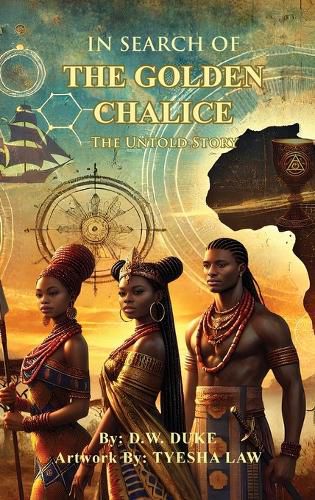Readings Newsletter
Become a Readings Member to make your shopping experience even easier.
Sign in or sign up for free!
You’re not far away from qualifying for FREE standard shipping within Australia
You’ve qualified for FREE standard shipping within Australia
The cart is loading…






This title is printed to order. This book may have been self-published. If so, we cannot guarantee the quality of the content. In the main most books will have gone through the editing process however some may not. We therefore suggest that you be aware of this before ordering this book. If in doubt check either the author or publisher’s details as we are unable to accept any returns unless they are faulty. Please contact us if you have any questions.
Between the years 3000 BCE and 1500 AD many Ethiopians and Yemenites settled in West Africa. The relationship of these distant regions was remote but powerful. For this reason, Ethiopian traditions, customs, and culture, are still prevalent in West Africa today, even sharing a belief that they are descended from the massive empire of Israel and Africa that later became known as the Solomonic Empire. This empire was based on the marriage of King Solomon and the Queen of Sheba and included a territory of nearly one million square miles and influenced much of the continent of Africa.Although the Bible does not specifically tell us that King Solomon and the Queen of Sheba were married, many writings throughout Africa and the Middle East attest to this marriage. In addition, researchers have opined that the Queen of Sheba coauthored the Song of Songs with King Solomon and identified herself as an African woman married to Solomon. According to this widely held tradition, King Solomon and the Queen of Sheba had a son named Ben Sira who became a powerful African emperor known as Prince Menelik I.This book explores the lives of three descendants of King Solomon and the Queen of Sheba, whose family ruled a vast empire in West Africa in the year 1617. Leading an army of 2,700 male and female warriors, they attacked a European military consisting of 20,000 British and Portuguese troops to drive the Atlantic Slave Trade from West Africa, in a war that became known as the Great Battle to Free the Slaves.
$9.00 standard shipping within Australia
FREE standard shipping within Australia for orders over $100.00
Express & International shipping calculated at checkout
Stock availability can be subject to change without notice. We recommend calling the shop or contacting our online team to check availability of low stock items. Please see our Shopping Online page for more details.
This title is printed to order. This book may have been self-published. If so, we cannot guarantee the quality of the content. In the main most books will have gone through the editing process however some may not. We therefore suggest that you be aware of this before ordering this book. If in doubt check either the author or publisher’s details as we are unable to accept any returns unless they are faulty. Please contact us if you have any questions.
Between the years 3000 BCE and 1500 AD many Ethiopians and Yemenites settled in West Africa. The relationship of these distant regions was remote but powerful. For this reason, Ethiopian traditions, customs, and culture, are still prevalent in West Africa today, even sharing a belief that they are descended from the massive empire of Israel and Africa that later became known as the Solomonic Empire. This empire was based on the marriage of King Solomon and the Queen of Sheba and included a territory of nearly one million square miles and influenced much of the continent of Africa.Although the Bible does not specifically tell us that King Solomon and the Queen of Sheba were married, many writings throughout Africa and the Middle East attest to this marriage. In addition, researchers have opined that the Queen of Sheba coauthored the Song of Songs with King Solomon and identified herself as an African woman married to Solomon. According to this widely held tradition, King Solomon and the Queen of Sheba had a son named Ben Sira who became a powerful African emperor known as Prince Menelik I.This book explores the lives of three descendants of King Solomon and the Queen of Sheba, whose family ruled a vast empire in West Africa in the year 1617. Leading an army of 2,700 male and female warriors, they attacked a European military consisting of 20,000 British and Portuguese troops to drive the Atlantic Slave Trade from West Africa, in a war that became known as the Great Battle to Free the Slaves.